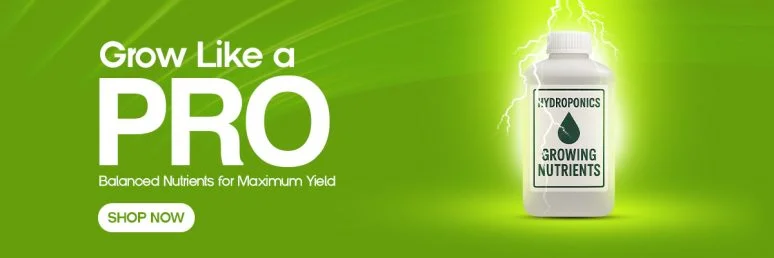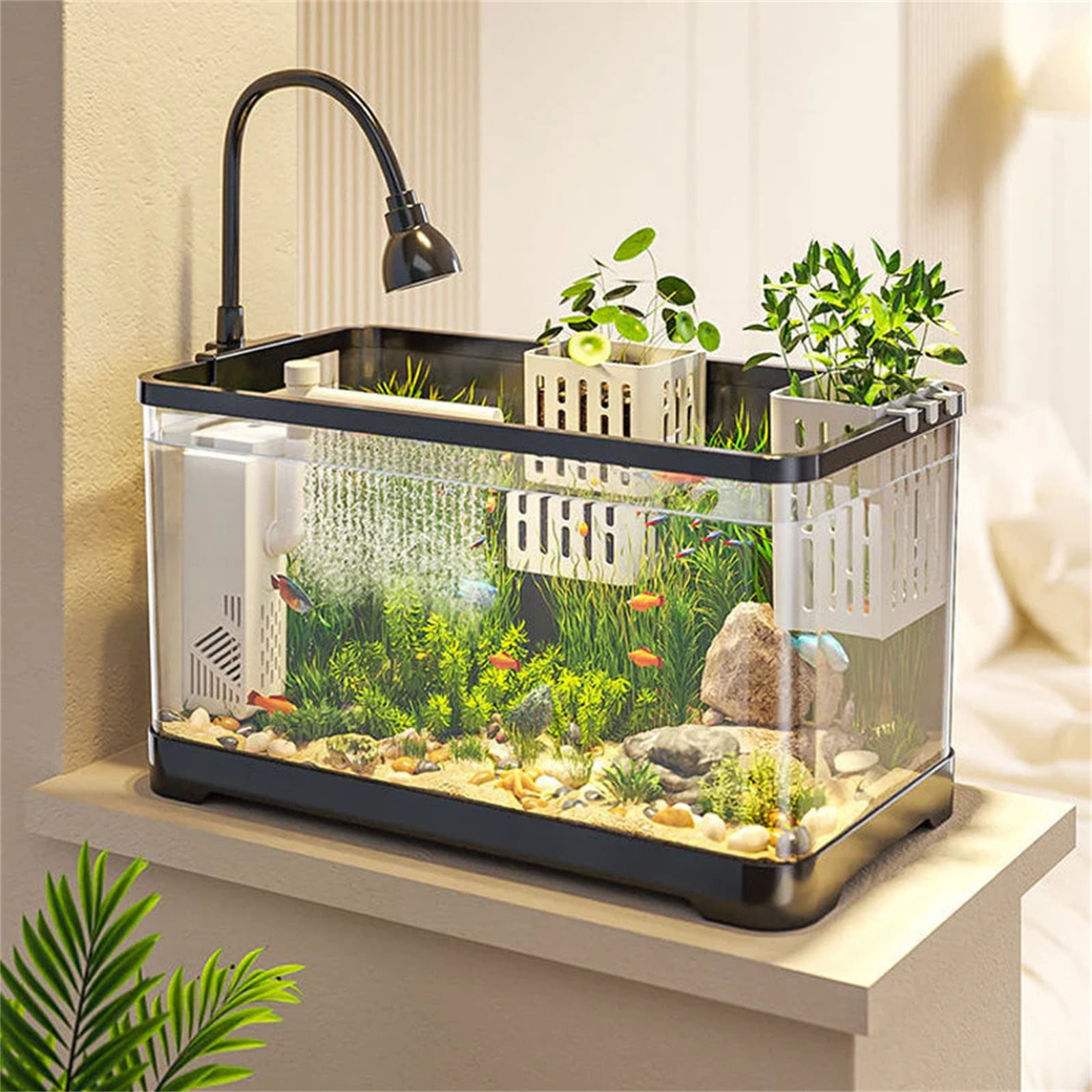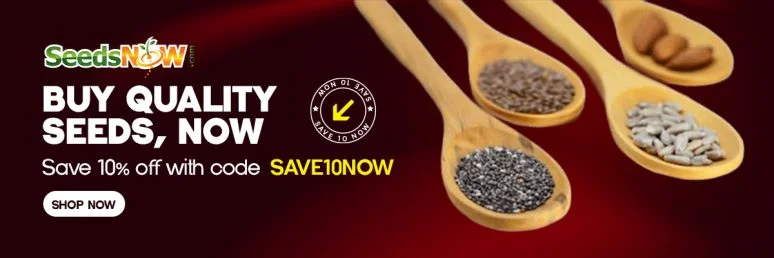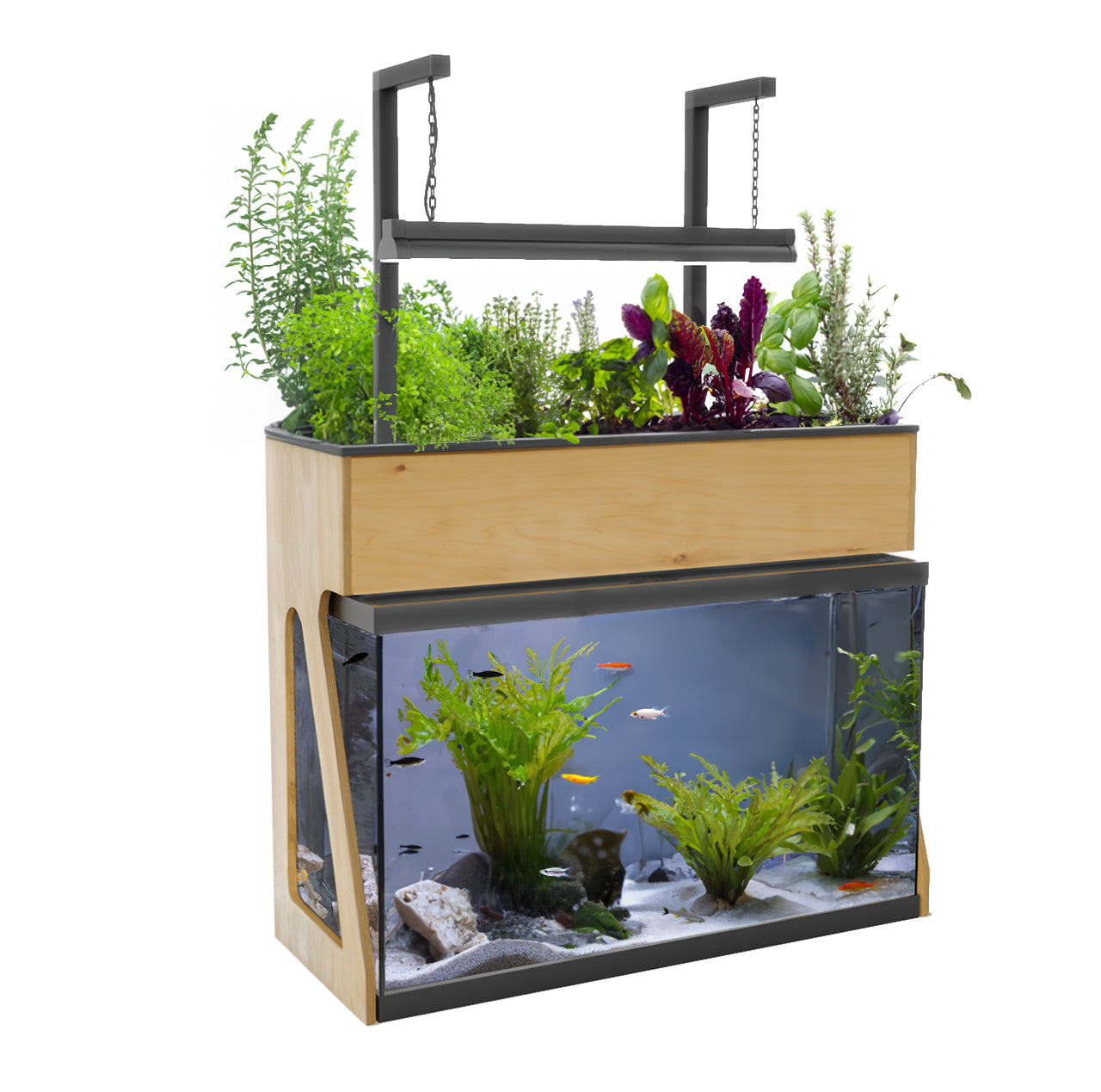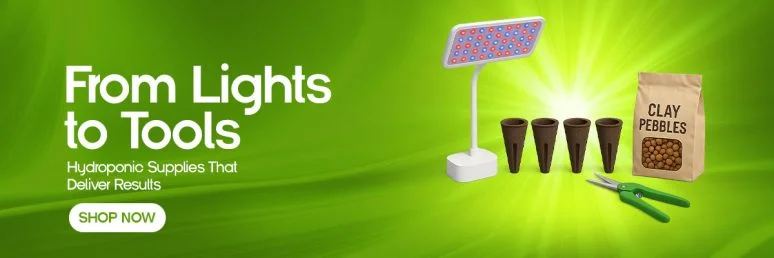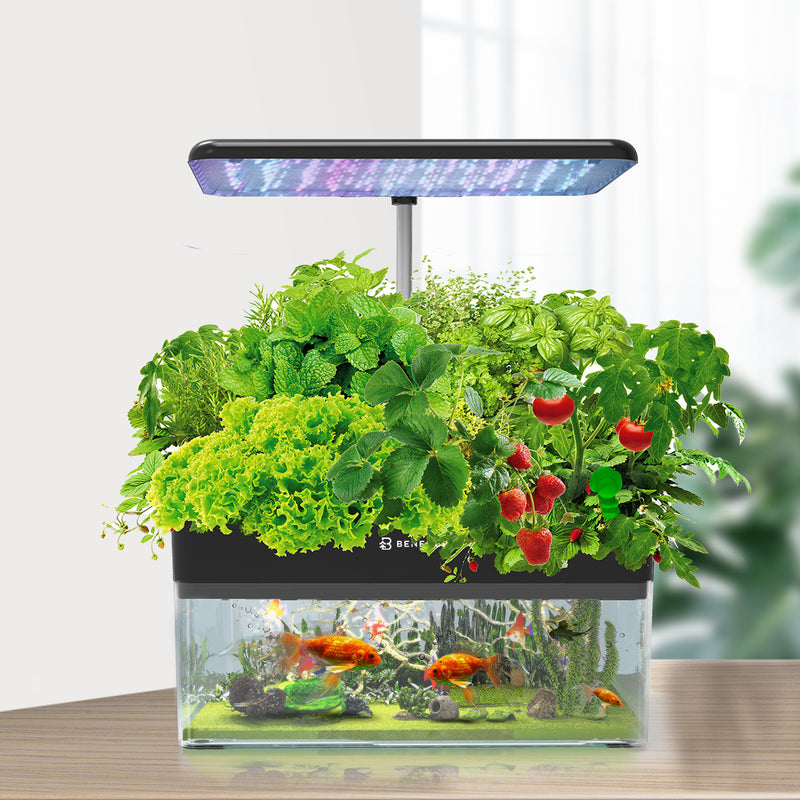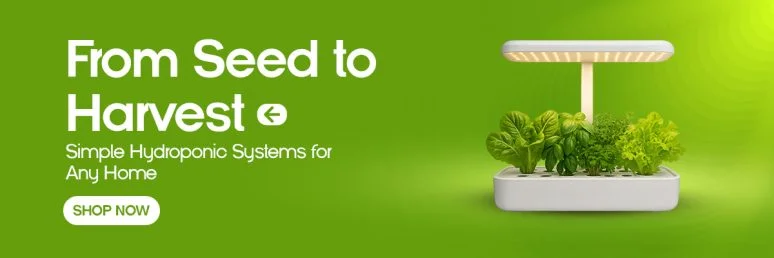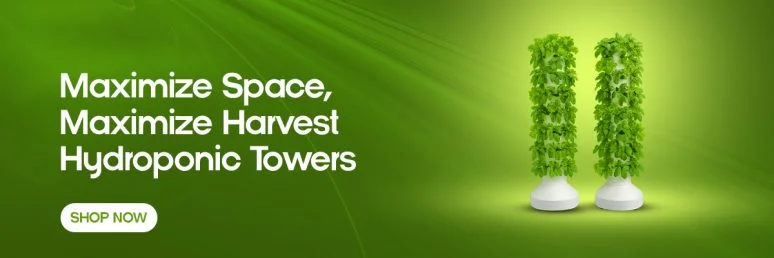Best Fish Species for Fishtank Hydroponics: What to Choose and Why
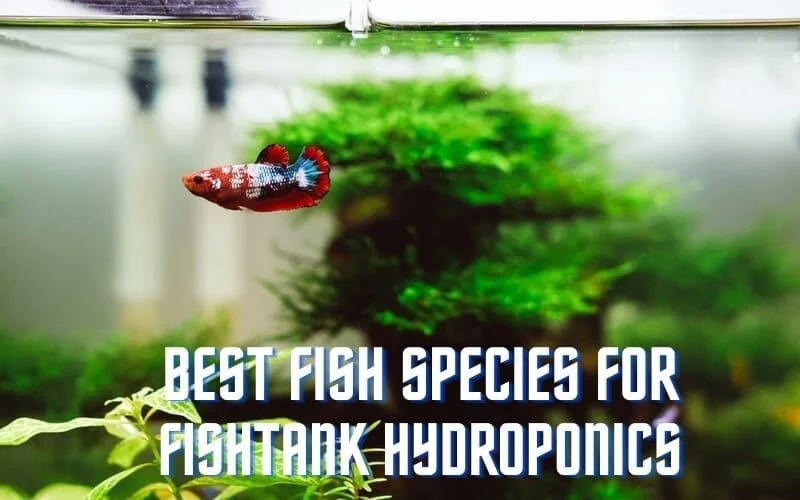
Key Takeaways
- Tilapia ranks as the top fish for hydroponic systems due to its hardy nature, excellent waste production, and adaptability to various water conditions.
- Goldfish and koi are ideal for beginners, with goldfish being perfect for smaller systems and koi offering longevity and aesthetic appeal for larger setups.
- The balance between fish waste production and plant nutrient needs is critical – choose fish that produce the right amount of nutrients for your specific plants.
- Temperature compatibility between fish and plants is essential, with most hydroponic systems operating optimally between 65-75°F (18-24°C).
- AquaGrow Hydroponics offers specialized consulting services to help you design the perfect fish-plant ecosystem for sustainable indoor food production.
The secret to a thriving hydroponic system isn’t just in the plants—it’s swimming right below them. Selecting the right fish species can mean the difference between a struggling setup and a flourishing aquaponic ecosystem that provides nutrients for your plants and possibly food for your table.
When I built my first system, I learned quickly that not all fish are created equal when it comes to hydroponics. The best species offer a perfect balance of waste production, hardiness, and compatibility with your specific setup. Working with AquaGrow Hydroponics has taught me that successful systems depend on making informed choices about your aquatic partners from the very beginning.
In this guide, we’ll dive deep into the world of fishtank hydroponics to help you choose the perfect finned friends for your system—whether you’re a beginner with a countertop setup or an experienced grower with a backyard operation.
Article-at-a-Glance
Fishtank hydroponics, more accurately called aquaponics, creates a symbiotic relationship between fish and plants. The fish produce waste containing ammonia, which beneficial bacteria convert to nitrites and then nitrates—essential nutrients for plant growth. The plants, in turn, filter the water that returns to the fish tank. This natural cycle creates a sustainable ecosystem that, when properly balanced, requires minimal intervention while producing both plants and potentially harvestable fish. For more information on how this system works, you can explore hydroponics explained.
Why Fish Selection Makes or Breaks Your Hydroponic System
“Hydroponic Garden Aquaponic Fish Tank …” from www.amazon.com and used with no modifications.
Choosing the right fish is arguably the most critical decision you’ll make when setting up an aquaponic system. Your fish selection impacts everything from water temperature requirements and pH balance to nutrient production and system maintenance needs.
The perfect fish species provides consistent waste output for your plants without being too sensitive to water parameter fluctuations. It should thrive in water temperatures that also suit your plants and adapt to the size constraints of your tank. Make the wrong choice, and you’ll find yourself constantly battling water quality issues, dealing with sick fish, or watching your plants struggle from inadequate nutrition.
I’ve seen countless systems fail simply because the fish species wasn’t compatible with the overall setup design or the grower’s experience level. That’s why understanding each species’ specific requirements and characteristics is essential before making your selection.
Top Fish Species for Your Hydroponic Tank
“VIVOSUN 3-Gallon Aquaponic Fish Tank …” from www.amazon.com and used with no modifications.
After years of experience and countless conversations with successful aquaponic growers, I’ve identified five fish species that consistently outperform others in hydroponic systems. Each has distinct advantages depending on your specific goals, system size, and level of experience.
1. Tilapia: The Hardworking Nutrient Powerhouse
Tilapia stands as the undisputed champion of aquaponic fish for good reason. These hardy creatures adapt to a wide range of water conditions, tolerate higher stocking densities, and produce excellent waste for plant nutrition. Their rapid growth rate means they can reach harvestable size in just 6-8 months, making them ideal if you’re interested in fish production alongside plant growing.
Tilapia Quick Facts
Temperature range: 75-85°F (24-29°C)
pH tolerance: 6.5-8.5
Growth rate: Fast (1-2 lbs in 6-8 months)
Stocking density: Up to 1 fish per 5 gallons for mature systems
Best plant pairings: Leafy greens, herbs, fruiting plants with high nutrient demands
Beginner friendly: Yes (medium-large systems)
I’ve found that Nile tilapia (Oreochromis niloticus) and Blue tilapia (Oreochromis aureus) perform exceptionally well in home systems. They’re omnivorous, accepting most commercial fish feeds, and remarkably resistant to disease when kept in proper conditions. The main drawback is their temperature requirements—they need warmer water than some other species, which means heating costs in cooler climates and careful plant selection to ensure temperature compatibility.
2. Goldfish: Perfect for Beginners and Small Systems
Goldfish are the unsung heroes of small-scale aquaponics. These colorful swimmers offer an accessible entry point for beginners while providing consistent nutrient production. Their ability to tolerate cooler water temperatures makes them ideal for indoor systems where maintaining high temperatures might be challenging or costly.
Common goldfish produce more waste per body weight than many other ornamental species, creating an excellent nitrogen source for your plants. They’re incredibly hardy, surviving in less-than-perfect water conditions while you learn the ropes of system management. I’ve maintained goldfish in systems for 5+ years with minimal issues, even through occasional parameter fluctuations that would stress more sensitive species. For more insights on selecting the best fish for aquaponics, consider exploring recommended species.
One significant advantage of goldfish is their availability—you can find them at almost any pet store at affordable prices, making them perfect for those just starting their hydroponic journey. Their primary drawback is their growth potential; given enough space, common goldfish can reach 8-12 inches, so plan your system size accordingly.
3. Koi: Beautiful and Productive Long-Term Partners
Koi bring both aesthetic beauty and productive capacity to larger hydroponic systems. These ornamental carp relatives create substantial waste for your plants while adding a stunning visual element that goldfish can’t match. Their longevity is remarkable—properly maintained koi can live 20-30 years or more, becoming long-term partners in your hydroponic journey.
The waste production from koi is excellent for systems growing fruiting plants or those with higher nutrient demands. Their temperature tolerance range (60-75°F) offers more flexibility than tilapia, though they still prefer water on the warmer end of that spectrum. Keep in mind that quality koi require a significant investment, with specimens costing anywhere from $25 to several hundred dollars depending on coloration and pattern.
For maximum success with koi, I recommend at least 50-100 gallons of water volume per fish, as they can grow quite large (1-3 feet) over their lifetime. Their size means they’re better suited for outdoor or basement systems rather than living room setups, though juvenile koi can work well in smaller indoor systems temporarily. For more information on suitable fish options, check out this discussion on the best fish for small-scale hydroponics.
4. Catfish: Hardy Bottom-Dwellers for Larger Systems
Channel catfish and bullhead catfish offer excellent options for growers looking to produce both plants and consumable fish. These bottom-dwellers are among the most forgiving fish species, tolerating wide temperature ranges and less-than-perfect water conditions. Their omnivorous diet and efficient feed conversion make them economical choices for productive systems.
What makes catfish particularly valuable in hydroponics is their behavior—they disturb settled solids when foraging along the tank bottom, preventing anaerobic zones and keeping nutrients in circulation. Their waste contains high levels of nitrogen, phosphorus, and potassium—precisely what growing plants need. I’ve found systems with catfish require less maintenance to prevent solid buildup, a significant advantage for busy growers.
The main consideration with catfish is their space requirement. Even in aquaponics, they need about 8-10 gallons per fish when fully grown. They’re also nocturnal by nature, so you won’t see as much active swimming behavior during daylight hours compared to other species.
5. Bluegill: The Native Alternative
For North American growers interested in working with native species, bluegill sunfish present an excellent option. These adaptable fish handle temperature fluctuations better than many tropical species, thriving in water from 60-80°F. Their natural presence in local ecosystems means they’re well-adapted to your regional conditions, reducing the need for extensive climate control in your system.
Bluegill produce moderate amounts of waste—less than tilapia but more than many ornamental species—making them suitable for systems growing leafy greens and herbs. Their omnivorous feeding habits mean they’ll accept commercial fish feeds while also helping control any insect larvae that might find their way into your system. I’ve successfully paired bluegill with lettuce, spinach, and kale in medium-sized backyard systems.
If you’re considering bluegill, check local regulations first. Some areas require permits for keeping native fish species, even in closed aquaponic systems. Their growth rate is moderate, reaching harvestable size (½ pound) in about 12-18 months under good conditions.
Fish Selection Criteria: Matching Species to Your Setup
“Aquarium Hydroponic Planting Basket …” from www.walmart.com and used with no modifications.
The perfect fish for your system depends on several critical factors. Rather than simply copying someone else’s setup, I recommend evaluating your specific conditions and goals to make an informed choice. For more guidance, you can explore recommended plants and fish in aquaponics.
Temperature Requirements and System Compatibility
Temperature compatibility between your fish and plants is non-negotiable for system success. Most common hydroponic plants thrive in water temperatures between 65-75°F (18-24°C), which aligns well with goldfish, koi, and bluegill requirements. Tilapia prefer warmer water (75-85°F), meaning you’ll need to select heat-loving plants or invest in separate temperature control systems for fish and plant components.
Home Systems (10-100 Gallons)
Home systems offer the perfect balance between productivity and manageability for serious hobbyists. In this range, goldfish and juvenile koi excel for cooler setups, while small groups of tilapia work beautifully if you can maintain warmer temperatures. For a 50-gallon system, I recommend starting with 5-7 medium-sized goldfish or 3-4 small tilapia, allowing room for growth and bioload increase.
At this scale, component selection becomes crucial. Incorporate a solids filter between your fish tank and grow beds to capture larger waste particles before they break down. Bell siphons work exceptionally well in these medium-sized systems, creating the flood and drain cycle that roots love while ensuring proper oxygenation. I’ve found that home systems can comfortably support 8-12 square feet of growing space when properly stocked and maintained. For more details on how to optimize your setup, check out hydroponics explained.
Backyard Systems (100+ Gallons)
Backyard systems represent the most productive category for home growers, offering enough capacity to grow significant amounts of both fish and plants. At this scale, tilapia, catfish, and koi become the stars of the show, with each offering unique advantages. Tilapia maximize food production, koi provide long-term system stability and visual appeal, while catfish offer hardiness with minimal temperature control needs.
For optimal results in larger systems, implement zone-based plant layouts that match plant types to nutrient concentration levels. Place heavy feeders like tomatoes and peppers near the entry point of fish water, where nutrient levels are highest. Position leafy greens in the middle zone and herbs toward the end of the system where waters are most purified. With 200+ gallons, you can comfortably stock 15-20 tilapia or 8-10 catfish while supporting 20+ square feet of growing space. For more insights, explore how big hydroponic plants can get in such systems.
The Perfect Fish-Plant Combinations
“AquaSprouts Garden – 29 Gal. Aquaponics …” from aquasprouts.com and used with no modifications.
Not all fish-plant pairings are created equal. The ideal combination balances fish waste production with plant nutrient uptake while ensuring temperature compatibility. I’ve experimented with dozens of combinations over the years and found that certain pairings consistently outperform others in terms of growth rates, system stability, and maintenance requirements.
The most successful systems match fish waste output with plant feeding demands. Fast-growing, heavy-feeding plants require fish species that produce substantial waste (like tilapia), while lighter-feeding plants do better with more moderate waste producers like goldfish or bluegill. Temperature alignment is equally important—cool-water fish paired with cool-season crops, warm-water fish with tropical or summer crops.
Best Fish for Leafy Greens
Leafy greens like lettuce, spinach, and kale thrive with moderate nutrient levels and cooler water temperatures (60-75°F), making them perfect companions for goldfish, koi, and bluegill. These fish produce enough nitrates to fuel rapid leaf development without overwhelming the system. I’ve achieved harvest-ready lettuce in just 30 days using goldfish-based systems, with each mature fish (4-6 inches) supporting approximately 2 square feet of growing space for leafy greens.
Ideal Pairings for Fruiting Plants
Fruiting plants such as tomatoes, peppers, and cucumbers demand significantly higher nutrient levels than leafy greens. Tilapia and catfish provide the rich waste stream these heavy feeders need. In my systems, a well-established tank of 10-12 adult tilapia (1lb each) can support 15-20 fruiting plants at peak production. The higher water temperatures these fish prefer (75-85°F) also benefit heat-loving fruiting crops, creating a natural synergy that maximizes both fish and plant growth.
Fish Species for Herb Gardens
Best Fish-Herb Pairings by Temperature Range
Cool-water herbs (60-70°F): Goldfish or koi with mint, cilantro, parsley
Moderate temperature herbs (65-75°F): Bluegill or koi with basil, thyme, oregano
Warm-water herbs (70-80°F): Tilapia with rosemary, sage, lemongrass
Herbs offer tremendous versatility in hydroponic systems, with different varieties thriving across various temperature ranges. This flexibility makes them perfect for mixed-fish systems or seasonal adjustments. Mint, parsley, and dill perform exceptionally well in cooler goldfish or koi systems, while basil and rosemary prefer the warmer environments created by tilapia. Most herbs have moderate nutrient requirements, making them excellent buffer crops that can adjust to fluctuating nutrient levels as your fish grow.
For maximum aromatic oil production in herbs, maintain slightly higher potassium levels in your system. I supplement occasionally with seaweed extract when growing herb-heavy systems, especially when paired with goldfish which produce waste somewhat lower in potassium than tilapia. This simple adjustment results in noticeably more fragrant and flavorful herbs without compromising system balance.
The fish-herb connection goes beyond just nutrients. Many herbs contain natural antimicrobial and anti-fungal compounds that can benefit system health. Growing mint, oregano, and thyme near your fish tank may help suppress certain pathogens in your water, creating a more resilient ecosystem. I’ve consistently observed fewer fungal issues in systems with diverse herb plantings compared to those growing only leafy greens.
When planning herb production, consider staggering your plantings to maintain consistent harvest quantities. Unlike leafy greens that are harvested whole, herbs allow for continual picking of outer leaves, creating a sustainable harvest cycle that perfectly matches the consistent nutrient production from your fish.
Your Hydroponic Fish Success Blueprint
“AquaGarden Aquaponics Fish & Garden …” from benehorti.com and used with no modifications.
Success with fish-based hydroponics follows a predictable pattern that I’ve seen repeated across hundreds of systems. Start with appropriate fish selection based on your specific conditions, followed by careful system cycling before adding plants. Monitor water parameters closely during the first 2-3 months as beneficial bacteria colonies establish. Feed conservatively, increasing gradually as plants develop and demonstrate nutrient uptake through vibrant growth. Remember that stability is your primary goal—sudden changes in temperature, pH, or feeding routines stress both fish and the microbiological system they depend on.
For those seeking a comprehensive approach, I recommend documenting your journey. Record water parameters, feeding amounts, and plant growth rates to identify patterns and optimize your specific system. The most successful hydroponic gardeners I know maintain this scientific mindset, treating each system as a unique ecosystem that requires customized care rather than following rigid formulas. With patience and observation, you’ll develop an intuitive understanding of your system’s rhythms and needs.
Frequently Asked Questions
Throughout my years working with hydroponic systems, I’ve encountered certain questions repeatedly from beginners and experienced growers alike. These answers address the most common concerns about fish selection and management in hydroponic systems.
Can I eat the fish from my hydroponic system?
Yes, you can eat fish grown in properly maintained hydroponic systems, provided you’ve selected an edible species like tilapia, catfish, or bluegill. However, this requires careful attention to what enters your system—use only fish-safe, food-grade materials for all components and avoid any chemicals or treatments not explicitly rated for food fish. For maximum safety, maintain detailed records of water quality and follow recommended growing periods before harvest.
Food Fish Safety Checklist
✓ Food-grade materials used throughout system
✓ No antibiotics or non-approved treatments used
✓ Water parameters consistently within healthy ranges
✓ Fish fed high-quality feed appropriate for consumption
✓ Appropriate growing time achieved (species-dependent)
✓ Local regulations for fish production followed
If you’re specifically building a system for edible fish production, I recommend consulting with local agricultural extension offices or aquaculture specialists who can provide guidance on regulations and best practices for your specific region. Some areas require permits for raising food fish, even on a small scale for personal consumption.
For ornamental species like goldfish and koi, while they’re technically edible and consumed in some cultures, I don’t recommend them for food production. They’re more valuable as long-term system partners, and their growth rates and feed conversion efficiency are significantly lower than purpose-bred food fish like tilapia.
How often should I test water parameters in a fish-based hydroponic setup?
During system startup and cycling, test ammonia, nitrite, nitrate, pH, and temperature daily until parameters stabilize (typically 4-6 weeks). Once established, test these parameters weekly, plus dissolved oxygen and KH (carbonate hardness) bi-weekly. Increase testing frequency during any changes to fish stocking levels, feeding routines, or after adding new system components. This proactive monitoring prevents most common problems before they affect fish health or plant productivity. For more information on why it’s important to test pH levels, check out this resource.
What should I do if my fish get sick in a hydroponic system?
At first signs of illness—unusual behavior, loss of appetite, visible spots, or fin damage—immediately test all water parameters and perform a partial water change (15-20%) with dechlorinated water. Isolate affected fish if possible, as many fish diseases spread rapidly. Avoid most medications in the main system, as they can harm beneficial bacteria and plants.
Prevention remains the best approach—maintain stable water parameters, avoid overstocking, and quarantine any new fish for at least two weeks before introducing them to your main system. For recurrent issues, consider adjusting water temperature or pH to less favorable ranges for common pathogens while still maintaining comfortable conditions for your chosen fish species.
How long does it take for fish waste to convert into usable nutrients for plants?
The complete nitrogen cycle in a new hydroponic system typically takes 4-6 weeks to establish fully. This process involves ammonia from fish waste converting first to nitrite (within days) and then to plant-usable nitrate (additional 1-3 weeks) through bacterial action. Established systems process ammonia much faster, often completing the cycle within 24-48 hours when operating at peak efficiency. To understand more about the growth potential of plants in such systems, you might explore how big hydroponic plants can get.
You can accelerate this process by introducing beneficial bacteria from established systems (using media, filter material, or commercial bacterial starters) and maintaining optimal conditions for bacterial growth (warm water, adequate oxygen, and stable pH between 6.8-7.4). During system cycling, feed fish minimally to prevent ammonia spikes that can stress or kill both fish and developing bacterial colonies. For more information on suitable fish species, check out this recommended list of fish for aquaponics.
Can I mix different fish species in my hydroponic tank?
Mixing compatible fish species can work well when their temperature and pH requirements overlap significantly. Goldfish and koi make excellent companions due to their similar needs, while bluegill can coexist with catfish in moderate-temperature systems. However, I advise against mixing tilapia with cool-water species, as the temperature compromise would stress both.
When mixing species, consider behavioral compatibility and size differences that might lead to aggression or competition. Provide adequate hiding places and ensure feeding methods allow all fish access to nutrition. Start with small numbers of each species and observe carefully before increasing population density. Some of my most stable systems have featured goldfish and koi together, with the different feeding behaviors actually helping maintain cleaner tank conditions than single-species setups.
For the ultimate balance between fish health and plant production, consider creating a system with separate fish tanks operating at different temperatures, connected to a common plant growing area. This advanced approach allows you to optimize conditions for each species while still maintaining a unified nutrient delivery system. Working with AquaGrow Hydroponics can help you design the perfect custom system that balances fish welfare with maximum plant productivity for your specific needs.
Fishtank hydroponics is an innovative method combining aquaculture and hydroponics, allowing plants to grow in a water-based environment while fish provide the necessary nutrients. This system creates a symbiotic relationship where both plants and fish benefit. Understanding the importance of maintaining the right pH and EC levels is crucial for the health of both plants and fish in a hydroponic setup.


